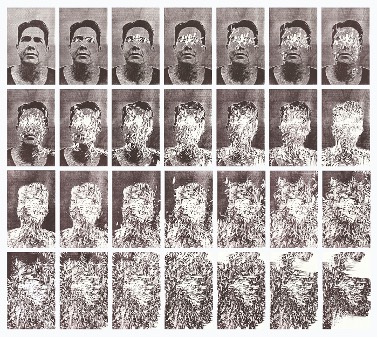by Lori Bowen
The “37th Annual Valdosta National” exhibition – hosted at the Dedo Maranville Fine Arts Gallery – features a wide range of media from textile to videography and is host to the pieces of 25 artists in total. The juried show consists of selections picked from 195 submissions by juror Michael McFalls and ran from January 16th to February 7th, 2025.
Upon entering the gallery, a viewer is met with a large, open space. The exhibit’s pieces, for the most part, are hung along the venue’s walls, creating a circular journey around the show with benches for rest in the center of the room. A majority of the works are presented in sets of two: pairs of pieces from each artist related to one another in ways such as concept, formal elements, or subject matter. This generates a rhythm throughout your walk along the gallery walls and encourages relationships to be drawn between the presented works. Lighting throughout the gallery is a consistent warm white apart from the furthermost right corner, in which a darkened nook is utilized to present Phil Gleason’s Barber Shop and Long Night Café.

Though the subject matters of the exhibition vary, a commonality can be drawn between themes of the otherworldly, outlandish, and surreal. The Gleason works previously noted, for example, are three-dimensional dioramas extended backward into space by way of infinity mirror, creating liminal spaces that stretch on in repetition without human occupancy despite their cluttered appearance. The second, Long Night Café, presents a diner that repeats into infinity, walls covered in posters and empty tables covered with food that feels like it should be eaten but is instead left to become cold. The neighboring work, Jeffrey Rinehart’s Lost Signals, presents us with a similar vast space in painting form, albeit interrupted by bright television color bars hanging midair with no screen as their frame. The bars demand the viewer’s attention, and bring to the forefront the surrealism of the scene. It’s also fitting that this work is placed directly across from the only literal television screen in the gallery, which is constantly looping the video works of Sara Gevurtz and occasionally interrupting the gallery’s silence with the sudden sound of airplanes and wind.

The opposing wall features works that branch into different themes, one of the larger pieces being What Remains by Katherine Chudy – an arrangement of 28 woodcut prints featuring the portrait of a man being slowly chipped away and removed from recognition. Combined with the adjacent placement of Aimee Fresia’s Polar Walk 9 and Polar Walk 10, both of which depict an out-of-place polar bear walking through different urban neighborhoods at different points in time, this section of the exhibition comments on the feeling of belonging and identity. While the figure in What Remains is slowly losing himself and being erased, the polar bears in Polar Walk 9 and Polar Walk 10 are made to feel alien and out-of-place to the urban settings they’re placed in.
The content of the “37th Annual Valdosta National” asks viewers to examine their reality, challenges their perception of it, and asks how one might see or feel it differently than their neighbor. The exhibition’s success is guided by works that are both technically impressive and thought-provoking, creating an engaging space that invites discussion and interpretation of the works and the worlds in which they reside.